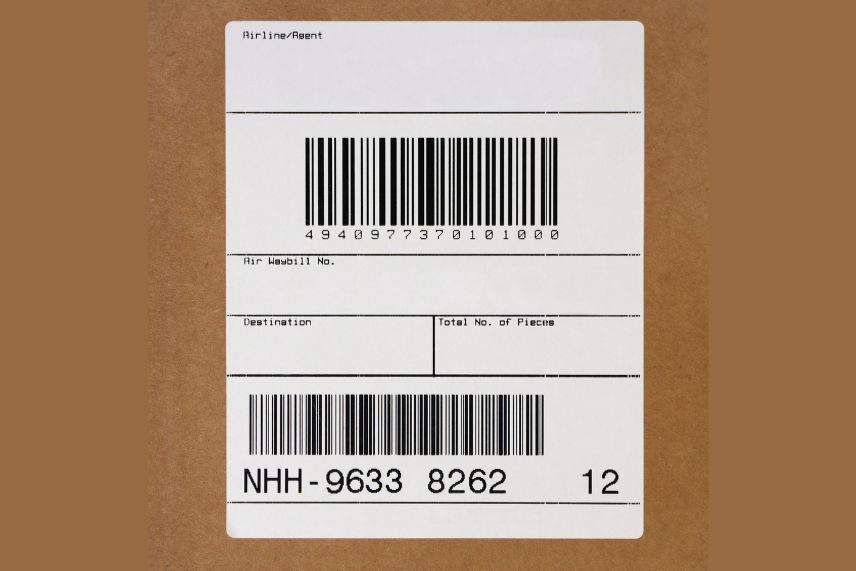In our fast-paced world of online shopping and global connectivity, shipping packages have become an integral part of our lives. And if you sell anything online, whether it be on eBay or Amazon, shipping labels are an essential part of your business.
Stats show that shipping labels reduce the chances of errors by 67 percent and ensure a smooth delivery process. They’re also an important part of e-commerce because they help manufacturers and retailers figure out what packages are being shipped to different regions.
As you can see, learning how to make a shipping label is very important. We understand that creating a shipping label may seem overwhelming, but don’t worry: there are many options available, and we’re here to help.
This guide will walk you through the step-by-step process of creating shipping labels. We’ll cover everything from gathering the necessary information to choosing the right label provider. Get ready to elevate your shipping game and ensure hassle-free deliveries.
What is a Shipping Label?
A shipping label is a document or sticker affixed to a package to provide important information about the shipment. It serves as a means of identification, tracking, and communication between the sender, carrier, and recipient throughout the shipping process.
The primary purpose of a shipping label is to ensure that the package reaches its intended destination accurately and efficiently. It contains key details about the package, such as the sender’s and recipient’s information, tracking number, carrier information, and any special handling instructions.
Shipping labels exist in various formats, such as adhesive paper labels or integrated labels within shipping documents. With advancements in technology, shipping and fulfillment tools have made it easier for senders to generate shipping labels, ensuring accuracy and compliance with carrier requirements.
More: What is standard shipping
Elements of Shipping Label
The elements, sometimes called requirements of a shipping label, typically include:
- Sender’s information
- Recipients information
- Tracking number
- Carrier information
- Barcode
- Special handling instructions
- Payment
- Shipping method
- Weight

1. Sender’s Information
The sender information includes the name, address, and contact details (phone number, email) of the individual or business shipping the package. It identifies the origin of the shipment and provides a means of communication with the sender if needed.
2. Recipient’s Information
The recipient’s name, address, and contact details (phone number, email) are essential for accurate delivery of the package. This information ensures that the package reaches the intended recipient at the correct location.
3. Tracking Number
A unique tracking number is assigned to each shipment. It allows the sender and recipient to track the package’s progress throughout the shipping process. The tracking number is typically provided by the shipping service provider and can be used to monitor the package’s journey online or through mobile applications.
4. Carrier Information
The shipping label should display the name or logo of the shipping service provider responsible for transporting the package. This information helps the carrier identify the appropriate delivery network and ensures that the package is handled correctly throughout its journey.
5. Barcodes
Barcodes are machine-readable codes that contain encoded information about the package. These codes expedite the sorting and routing process by allowing automated systems to scan and identify the package accurately. Barcodes can include the tracking number, carrier information, and other relevant details.
6. Special Handling Instructions
In some cases, packages may require special handling due to their contents or fragility. Including special handling instructions on the shipping label, such as “Fragile,” “Perishable,” or “Hazardous Materials,” alerts the carrier and their employees to take extra care when handling the package.
7. Payment
The shipping label often includes information related to payment for the shipping service. This may involve displaying the payment method used, such as “Prepaid,” “Collect on Delivery (COD),” or “Third Party Billing.” Indicating the payment status helps the carrier and recipient understand the terms of the shipment and fulfillment fees.
8. Shipping Method
The shipping label typically specifies the chosen shipping method or service. It may include options like “Standard Ground,” “Express,” “Priority,” or specific service levels offered by the carrier, such as “Next Day” or “Two-Day Delivery.” The shipping method informs the carrier of the desired speed and level of service for the package’s delivery.
9. Weight
The weight of the package is an essential element on a shipping label. It is typically displayed in either pounds (lbs) or kilograms (kg). The weight information allows the carrier to assess the shipping costs, determine the appropriate transportation mode, and ensure compliance with weight restrictions or regulations.
More: Discover the top tips about making the most of shipping and order fulfillment.
How to Create a Shipping Label
There are several ways to create a shipping label, depending on your preferences, resources, and the level of convenience you seek. Here are some of the common methods:
1. Through Carrier Service
If you’re shipping a small number of packages, you can easily create a shipping label manually through a carrier’s online services. However, it’s important to note that using a carrier is not the fastest way to get your shipping label printed.
Here are some essential things you should know when opting for a carrier service provider:
- Gather Required Information
Collect all the necessary information for the shipping label, including the sender’s and recipient’s details, package dimensions, and weight.
- Choose a Carrier Service
Select the carrier service that best meets your shipping needs. Popular carriers include:
- USPS
- UPS
- FedEx
- DHL
Visit the carrier’s website and navigate to their online shipping portal. Look for options like “Ship” or “Create a Shipment” to initiate the shipping label creation process.
- Enter Shipment Details and Select Shipping Service
Provide the required information in the designated fields. This typically includes the sender’s and recipient’s addresses, package weight, and dimensions. Then choose the appropriate shipping service options whether it’s Ground, Express, Priority, or Overnight.
- Generate Shipping Label
After entering the shipment details and selecting the shipping service, the carrier’s online portal should provide an option to generate the shipping label. Click on the relevant button or link to create the label.
2. Through Shipping Software and APIs
Shipping software helps you create shipping labels in bulk. They allow you to create these labels with one click, and most of these solutions are affordable. You can use Shippo for as low as $10/month. LetterTrack Pro, on the other hand, offers a starting price of $16 per month.
Some software solutions offer a pay-as-you-go model, whereas some, just like we have mentioned above, run on monthly-fee based models. Here are some vital things you should keep in mind when choosing a shipping software.
- Choose a Suitable Shipping Software
Select a shipping software or API that integrates with your e-commerce platform or business software.
- Set Up Integration
Follow the instructions provided by the shipping software provider to set up the integration with your system. This process may involve installing plugins, configuring settings, or establishing API connections.
- Enter Shipment Details and Select Shipping Service
Access the shipping software or API interface and enter the necessary shipment details. Next, choose the appropriate shipping service level based on your delivery needs.
- Generate Shipping Label
After selecting the shipment details and shipping service, the software will generate a printable label file in the required format, such as PDF or ZPL. Download the generated shipping label file and print it using a compatible label printer.
To choose the shipping software that best fits your need, check out our comprehensive guide on the most reputable shipping & fulfillment tools & service providers.
3. Through Third-Party Logistics Services
By now, you should be familiar with two of the most common ways you can create a shipping label. But if you’re wondering if there’s another way to go about printing shipping labels, there is: product shipping service, otherwise called a third-party logistics (3PL) provider.
To use this:
- Choose a 3PL Provider
Choosing the right third-party logistics (3PL) provider is a critical decision for businesses engaged in international e-commerce outsourcing. Consider factors such as their capabilities, pricing, geographical coverage, and customer reviews.
- Provide Shipment Details and Agree on Shipping Service
Give the 3PL provider all the necessary shipment details. Then, discuss and agree upon the desired shipping service level. They will provide you with options based on their available carrier partnerships and service offerings.
- Provide Label Information
Share the required label information with the 3PL provider. This typically includes the sender’s and recipient’s addresses, any additional information to be included on the label, and any specific formatting requirements you may have.
- Receive the Shipping Label
The 3PL provider will generate the shipping label for you based on the provided information. They may send it to you electronically via email or provide access to their online platform where you can download and print the label.
Takeaway
Now you can confidently generate accurate and professional shipping labels. The easiest way to get started is by using efficient software. This way, you can quickly automate label creation, and gain access to additional features like batch processing and rate comparison.
Invest in creating clear, accurate, and compliant shipping labels, and watch your shipping processes become smoother and more efficient than ever. Happy shipping.

Leave a Reply